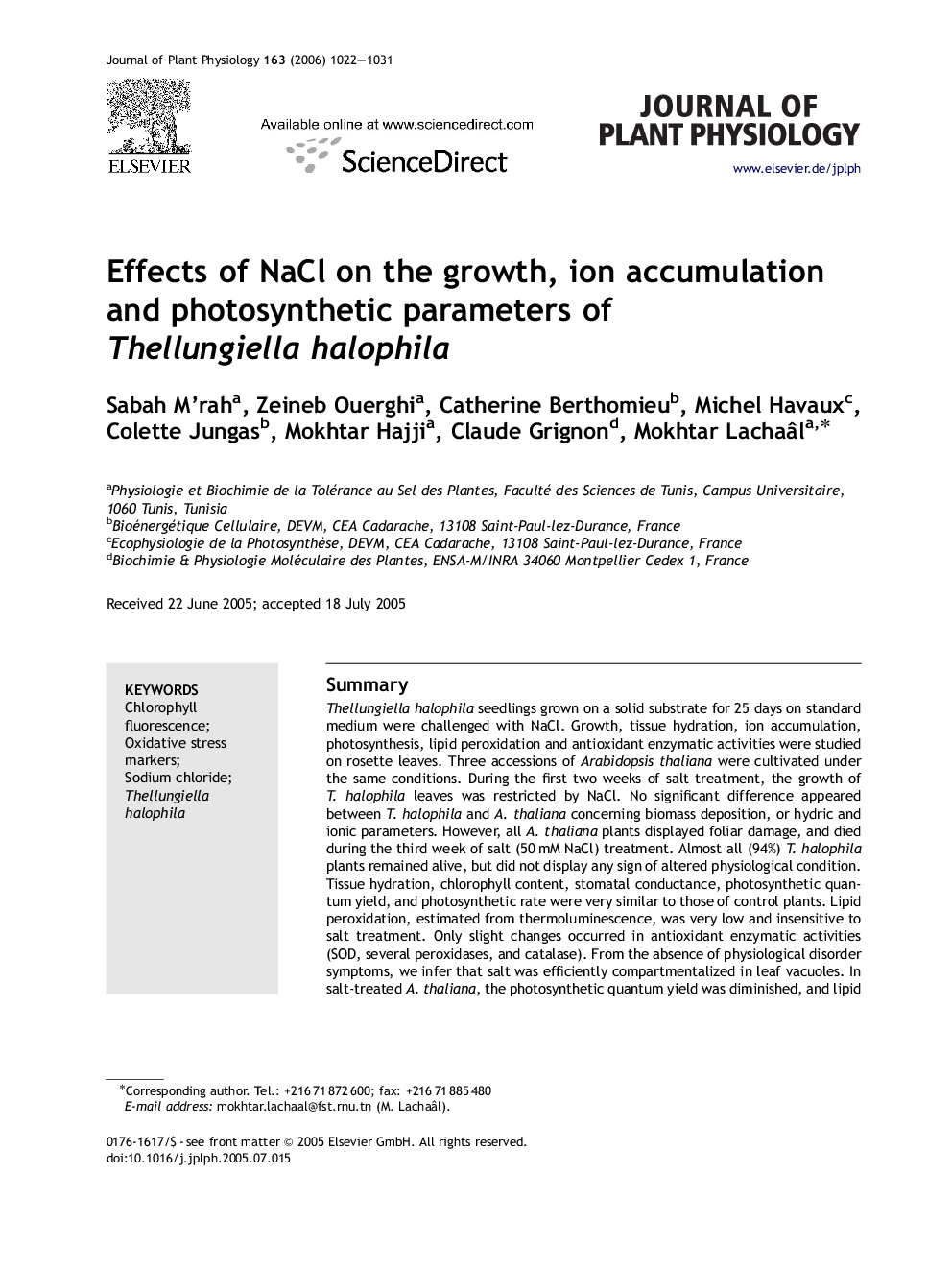| Article ID | Journal | Published Year | Pages | File Type |
|---|---|---|---|---|
| 2057729 | Journal of Plant Physiology | 2006 | 10 Pages |
SummaryThellungiella halophila seedlings grown on a solid substrate for 25 days on standard medium were challenged with NaCl. Growth, tissue hydration, ion accumulation, photosynthesis, lipid peroxidation and antioxidant enzymatic activities were studied on rosette leaves. Three accessions of Arabidopsis thaliana were cultivated under the same conditions. During the first two weeks of salt treatment, the growth of T. halophila leaves was restricted by NaCl. No significant difference appeared between T. halophila and A. thaliana concerning biomass deposition, or hydric and ionic parameters. However, all A. thaliana plants displayed foliar damage, and died during the third week of salt (50 mM NaCl) treatment. Almost all (94%) T. halophila plants remained alive, but did not display any sign of altered physiological condition. Tissue hydration, chlorophyll content, stomatal conductance, photosynthetic quantum yield, and photosynthetic rate were very similar to those of control plants. Lipid peroxidation, estimated from thermoluminescence, was very low and insensitive to salt treatment. Only slight changes occurred in antioxidant enzymatic activities (SOD, several peroxidases, and catalase). From the absence of physiological disorder symptoms, we infer that salt was efficiently compartmentalized in leaf vacuoles. In salt-treated A. thaliana, the photosynthetic quantum yield was diminished, and lipid peroxidation was augmented. These observations reinforce the conclusion that T. halophila could accumulate salt in its leaves without damage, in contrast to A. thaliana.
